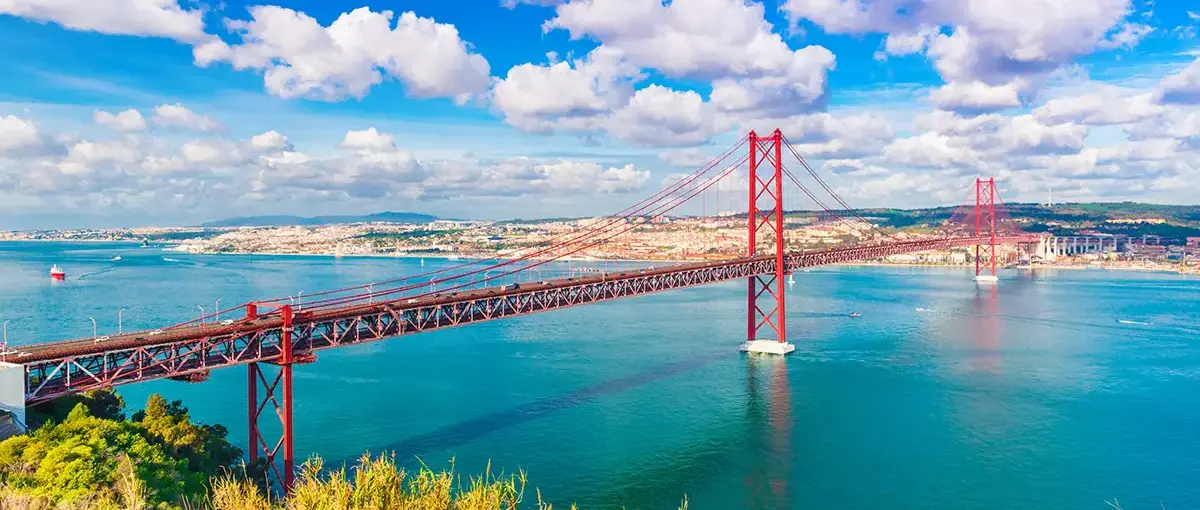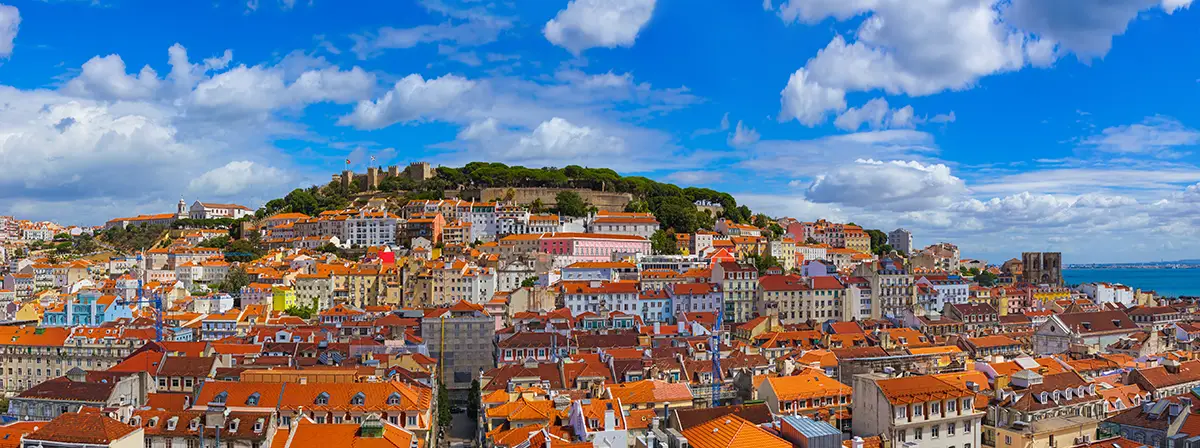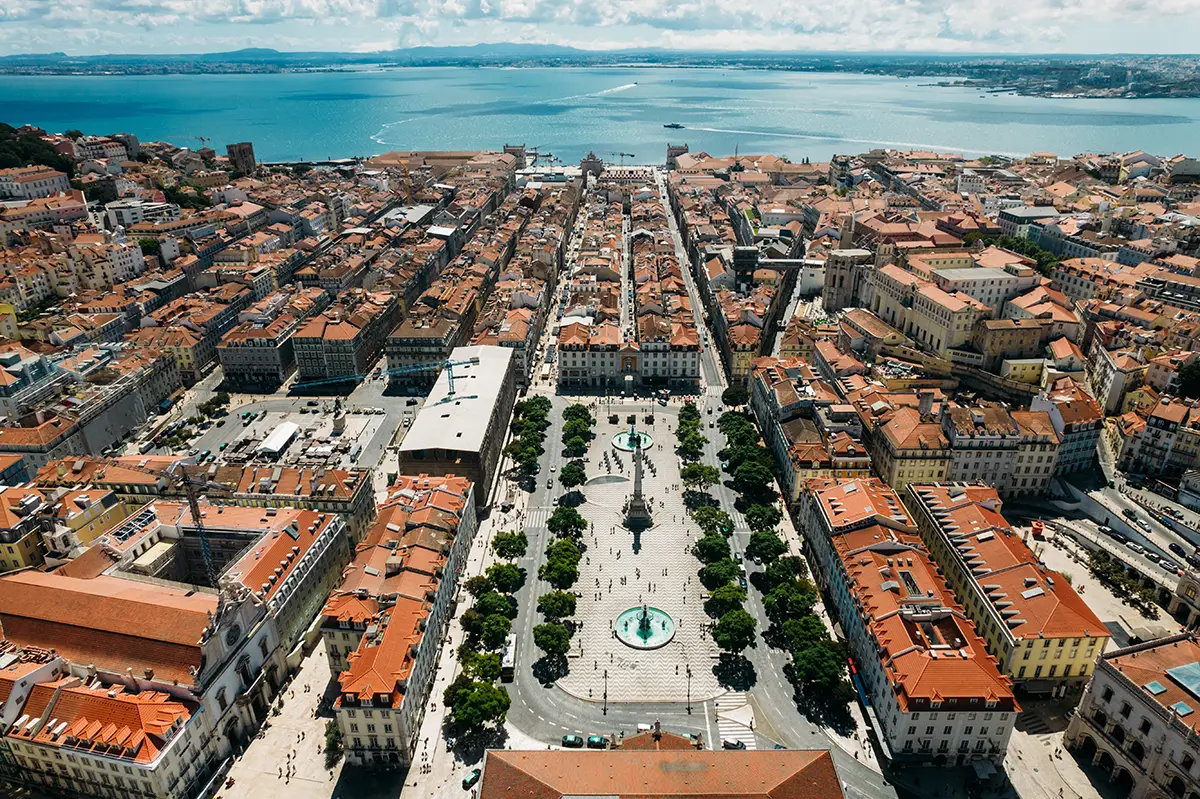
The recent earthquake off the Portuguese coast has left many residents questioning the safety and resilience of property constructions across the country. With a magnitude of 5.3 on the Richter scale, the seismic event was felt in several regions, including Lisbon, raising concerns about whether residents and property buyers should worry about the structural integrity of buildings in Portugal. To address these concerns, we have prepared an article exploring the safety of Portuguese constructions, featuring an exclusive interview with our in-house civil engineer at the Harland & Poston Group, Luís Santos.
The August 2024 Lisbon Earthquake: A Wake-Up Call?
On the night of 26th of August 2024, at 5:12 AM to be precise, residents in Lisbon woke up startled as their beds shook. For 12 seconds, Lisboans experienced the unsettling effects of an earthquake, with an intensity not seen since 1969. The 2024 earthquake occurred primarily off the Portuguese coast, measuring 5.3 on the Richter scale. According to the National Authority for Emergency and Civil Protection (ANEPC), the tremor was felt across various parts of the country, with a stronger intensity in the Lisbon Metropolitan Area, as well as on the Alentejo coast and in the Algarve. While there were no reports of significant damage, the event has understandably sparked conversations about the seismic vulnerability of properties in Portugal.
In a statement to the Portuguese press, Lisbon's Mayor, Carlos Moedas, reassured the public that the city is prepared for such events, emphasising that the capital has undergone extensive seismic studies and that modern buildings are constructed with earthquake-resistant designs. However, the recent quake has inevitably raised concerns among those looking to invest in Portuguese real estate, which is why we are here to explain that there is no need for concern.
According to Luís Santos, civil engineer at the Harland & Poston Group, there is no reason for concern, especially among new constructions in the Portuguese capital. “We study the effects of earthquakes on structures from our university days, learning to anticipate and mitigate potential damages with optimised structural designs,” explains the engineer.

Lisbon City Will Launch a New App to Inform about Seismic Events
In response to public concerns about seismic risks, the Lisbon City Council has taken proactive steps to enhance public safety by launching a new mobile application called "LXResist." Set to be released in the first week of September 2024, LXResist is designed to provide Lisbon residents with vital information about the city’s seismic risk areas. The app aims to educate the public on how to prepare for and respond to potential earthquakes, offering guidance on the safest locations during a seismic event. This initiative reflects the city’s ongoing commitment to improving disaster preparedness and public awareness.
The LXResist app is part of a broader strategy by Lisbon’s local government to bolster the city’s resilience to natural disasters. In addition to mapping out seismic risk zones, the app will offer users real-time updates, safety tips, and emergency contact information. It also features an interactive map that highlights the safest routes to take during an earthquake, helping residents plan their escape paths and identify the most secure locations in their area. This new tool is particularly significant given Lisbon’s seismic history and the fact that the city is located in an area of moderate to high risk.

Historical Context: The 1755 Lisbon Earthquake
Lisbon’s seismic vulnerability is not a new concern and is forever marked in its collective memory. The fateful 1st of November 1755 is one of the most significant dates for the Portuguese, when Lisbon was devastated by a catastrophic earthquake with an estimated magnitude of 8.5 to 9.0. This historical earthquake, followed by a tsunami and widespread fires, resulted in the near-total destruction of Lisbon, especially the city centre. The disaster killed tens of thousands of people and led to significant changes in the city’s architectural and urban planning policies. The impact of this event shaped the city’s approach to construction and disaster preparedness, embedding a deep awareness of seismic risks in Lisbon.
The devastation caused by the 1755 earthquake was followed by a reconstruction effort with new building codes and seismic considerations. The Marquis of Pombal, the Prime Minister of Portugal at the time, led the rebuilding efforts and introduced pioneering seismic-resistant construction techniques that influenced modern engineering practices. This historical context underscores the importance of ongoing vigilance and adherence to stringent building standards to mitigate the effects of future seismic events. Today, the buildings known as “Pombalinos” cover the region called Baixa de Lisboa, the central area of the city.
More recently, Lisbon experienced another significant earthquake. On 28th February 1969, another notable seismic event, measuring 6.3 on the Richter scale, caused considerable damage, particularly to older buildings and infrastructure. Although less catastrophic than the 1755 event, the 1969 earthquake highlighted the need for improved construction practices and reinforced the importance of seismic resilience in modern building standards. The aftermath of this earthquake led to even further advancements in engineering and construction codes, ensuring that Lisbon’s buildings are better equipped to handle seismic events.

Should Property Buyers in Portugal Be Concerned?
The short answer is no. Despite how frightening the night of 26th August 2024 was for those who experienced the earthquake, Portugal is no stranger to seismic activity, particularly along its coastline. The country sits on the boundary between the Eurasian and African tectonic plates, making it susceptible to earthquakes. The infamous 1755 Lisbon earthquake, the most significant in the country’s history, led to massive destruction and remains a historic reminder of the potential risks.
Today, Portugal's construction standards are vastly different and adhere to European standards, ensuring that all safety requirements are met. Over the past few decades, stringent building codes have been implemented to ensure that new constructions can withstand seismic forces. We spoke with Luís Santos, one of the lead engineers at the Harland & Poston Group, who highlighted that “modern buildings in Portugal, especially those constructed post-1980s, are designed to absorb and dissipate the energy released during an earthquake, minimizing damage and ensuring occupant safety.”
Insights from Luís Santos: Senior Civil Engineer at the Harland & Poston Group

To understand more about how modern property developments address seismic risks, we interviewed Luís Santos, Harland & Poston Group’s Senior Civil Engineer, responsible for some of the developments owned by the group in Portugal.
Question: Luís, can you comment on what are the primary seismic considerations you take into account when managing Harland & Poston Group’s developments?
Answer: “In our range of projects, structural design is crucial to ensure the stability of the development. The structural project fundamentally guarantees that the building can withstand seismic forces.”
Q: How does Lisbon's seismic history influence your construction decisions?
A: “The 1755 earthquake remains a significant part of our collective memory. We study the effects of earthquakes on structures from our university days, learning to anticipate and mitigate potential damages with optimized structural designs.”
Q: Which building codes or regulations do you follow to ensure earthquake resilience in our projects?
A: “Currently, we adhere to Eurocode 8 for earthquake calculations, along with other Eurocodes relevant to different structures. For reinforced concrete, we follow Eurocode 2; for steel structures, Eurocode 3, and so on.”
Q: How do you ensure our constructions meet or exceed local seismic standards?
A: “All structural projects in Portugal are calculated by certified engineers who sign off on their work with a responsibility form. Even with my experience, I always cross-check with the designer to ensure safety.”
Q: What specific structural elements do you incorporate to improve a building's ability to withstand an earthquake?
A: “Depending on the project, we select appropriate materials. For standard residential buildings, a reinforced concrete structure is ideal. For projects preserving old facades, we might use a metallic structure internally to connect with the surrounding walls.”
Q: What materials do you prefer for earthquake-resistant construction, and why? Are they more expensive?
A: “Structures designed to resist earthquakes are inherently stronger and more costly. The challenge is to make them as economical as possible while ensuring resilience.”
Q: How do modern materials compare with traditional ones in terms of earthquake resilience?
A: “Modern materials significantly outperform traditional ones. Historical constructions needed to be larger due to less resistant materials, but today’s engineering allows for bolder designs without compromising strength.”
Q: How do you approach retrofitting older buildings to make them more earthquake-resistant? Can you explain using the cases of Lusíadas and Rosa I and II?
A: “Each case is unique. For Lusíadas (a Harland & Poston Group development, completed in 2023), we preserved the front facade while constructing a new reinforced concrete structure behind it. In Rosa I and II (another Harland & Poston Group development, completed in 2024), we maintained the peripheral walls and added a metallic structure inside for additional support.”
Q: Are there any new technologies or techniques in earthquake-resistant construction that you are excited about?
A: “I prefer to use standard solutions for typical projects. However, special cases may require innovative approaches to create robust and cost-effective solutions.”
Q: How closely do you work with geologists or seismologists during the planning and construction phases?
A: “While we usually work with geologists for soil surveys, collaboration with seismologists is less common. Our structural designs consider regional earthquake risks based on mapped seismic activity.”
Q: Can you describe how their input influences your engineering decisions?
A: “Geologists provide crucial information about soil conditions. Seismologists help us account for varying earthquake risks depending on the region, influencing how we strengthen our designs.”
Q: What is the future of earthquake-resistant construction in Lisbon?
A: “The future is now. Modern construction methods are designed to withstand potential earthquakes, ensuring our buildings remain safe and resilient.”
Portugal Homes Developments in Lisbon: A Blend of History and Modernity
Portugal Homes takes pride in contributing to the safe and resilient development of Lisbon's infrastructure through our meticulously planned projects. All our developments adhere strictly to the Eurocode 8 and other relevant building codes, ensuring they are well-prepared to withstand seismic activity.
Two of our standout developments, Rosas I and II, are located in the heart of the historic Bairro Alto district, a neighbourhood renowned for its vibrant bohemian atmosphere and rich cultural heritage. Just steps away from the elegant Chiado and the picturesque Miradouro de São Pedro de Alcântara, Rosa II offers a unique living experience in one of Lisbon's most charming and traditional areas. This development comprises four distinct apartments, ranging from one to two bedrooms, with sizes between 57 m² and 99 m². Each unit is thoughtfully designed with modern elegance and top-quality finishes, ensuring both comfort and style, but also safety in its structure. The careful attention to detail in Rosa II, coupled with its prime location, makes it an ideal choice for those seeking a blend of historical charm and contemporary living.
Rosa I
Rosa II
In addition to Rosa I and II, another exceptional development by Portugal Homes is Lusíadas 75, located in Alcântara. This brand-new development features six floors with a total of 15 units, including studios, one-bedroom, and two-bedroom apartments, all designed with comfort, elegance, and or course safety, for the peace of mind from our buyers. This development is adhering to the strictest European construction codes, and features amenities such as a garden, parking, gym, and stunning river views from the third floor upwards. Lusíadas 75 offers a luxurious living experience WITH meticulous attention to detail, and high aesthetic standards ensure that each unit is not only visually appealing but also built to last. Situated near the trendy LX Factory and the CUF Hospital, Lusíadas 75 represents a perfect blend of modern living in a vibrant, fast-growing neighbourhood.
Lusíadas
Portugal Homes engineers manage every aspect of the construction process, from architectural design to the final build. They emphasize the use of high-quality materials and advanced construction techniques to ensure that properties are not only aesthetically pleasing but also structurally sound, including seismic regulations, to guarantee the safety and resilience of their developments. By prioritising safety and quality in every construction, Portugal Homes is not only enhancing the city's structure but also supporting Lisbon's long-term resilience against potential natural disasters.







